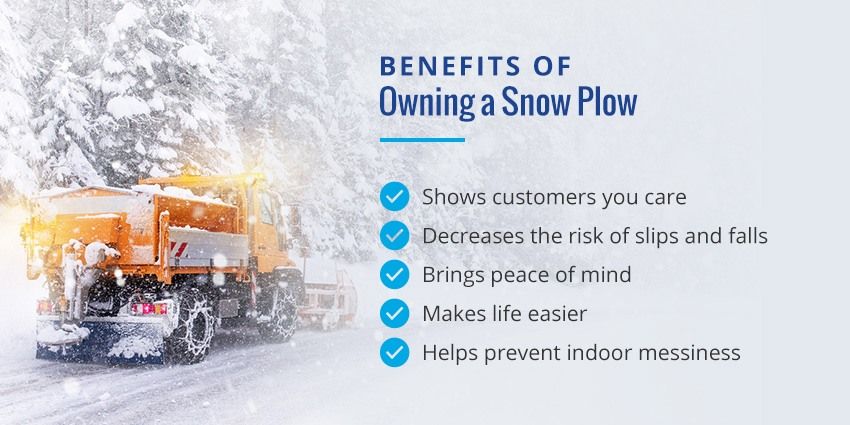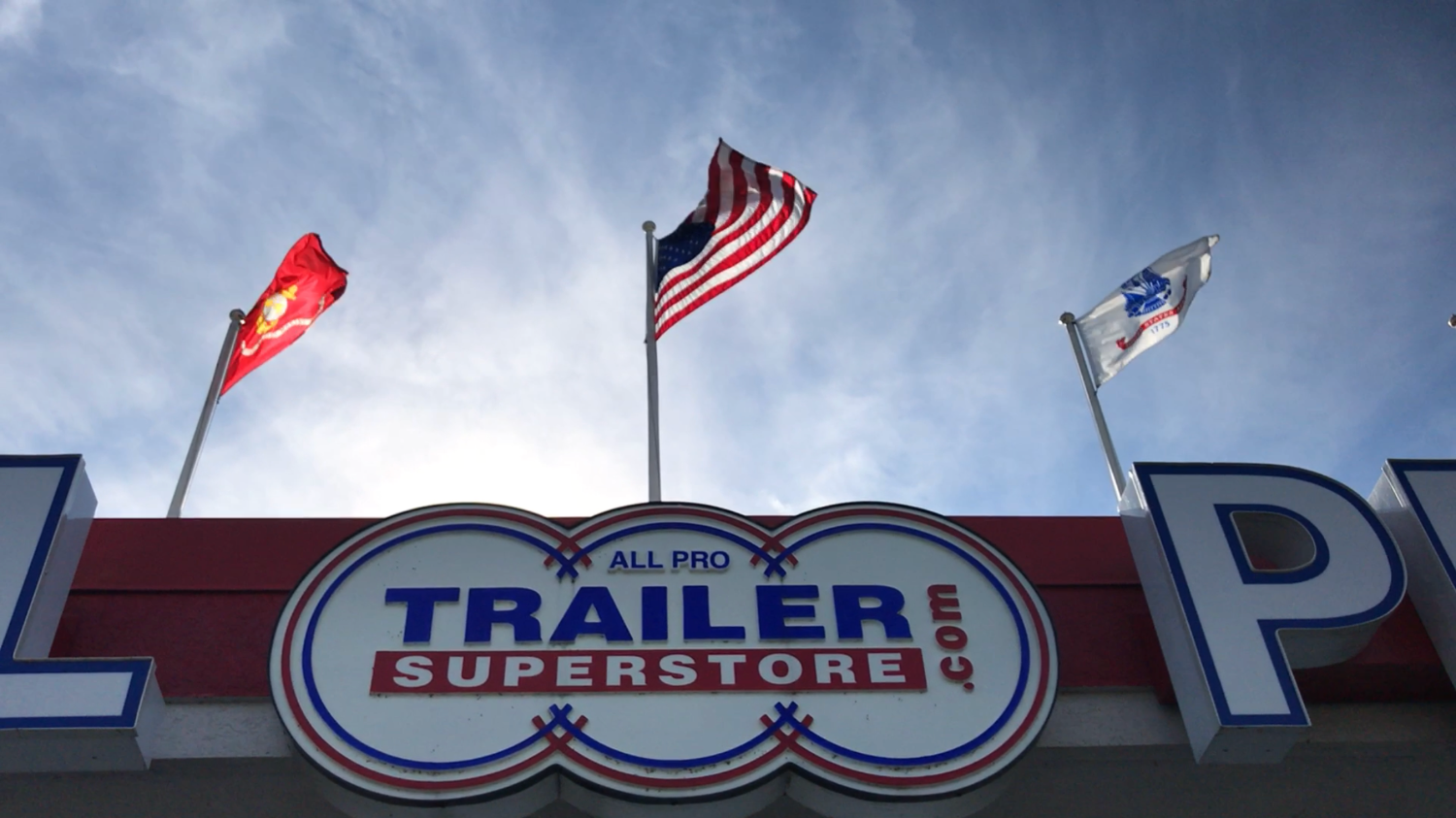What Are Snow Plows?
Feb 25, 2020Last Updated on October 23, 2024 by Alex Bobb
Last Updated on October 23, 2024 by allprotrailersuperstore
Snow plows help businesses and homeowners quickly and safely remove snow from their property. They’ve been around since the 19th century when snow removal became a necessity in cities like New York and Chicago. One of the first known uses of a snow plow occurred in 1862 in Milwaukee when horses pulled a cart with an attached plow through the streets. It didn’t take
long for towns and cities to realize there’s no better way to remove snow than with a plow.
Although they’re typically no longer drawn by horses, plows are still the main tool for snow removal. According to the Minnesota Department of Transportation, an analysis of various winter maintenance strategies found that plowing is the most effective form of winter maintenance.
Today’s snow plows are available in a range of shapes and sizes to suit different needs and budgets. You’ll find options whether you need to plow your driveway or free up parking spaces for your customers. If you live in a snowy state, know that you can put your shovel away forever and use better equipment that saves you back pain and time.
In this chapter, we’ll show you how snow plows work and provide tips for buying the right tool for your home or business. If you’re ready to equip your truck now, keep reading to learn more, or browse our selection of snow plows at All Pro Trailer Superstore.
Table of Contents
- What Are Snow Plows and How Do They Work?
- The Different Types of Snow Plows
- The Benefits of Owning a Snow Plow
- Tips for Choosing a Snow Plow
What Are Snow Plows and How Do They Work?
A snow plow is an attachment that’s typically mounted on the front of a vehicle for snow and ice removal. Plows are usually connected to trucks, loaders or motor grades. These vehicles are durable and strong enough to bear the weight of a plow and push snow.

Plows come in many shapes and sizes and are designed to scoop and push snow to the side to clear a road. The DOT might use a 12-foot-wide reversible plow, for example, to clear a 10-foot-wide path. The operator maneuvers the plow from inside the cab using levers or a controller.
Plows are often used in conjunction with salt spreaders, though they can be used independently. De-icing chemicals may be applied first to loosen compact snow and make it easier to plow.
The Different Types of Snow Plows
Manufacturers produce a wide variety of plows for different needs and applications. For example, a dump truck used to clear a highway will need a plow that’s wide enough to handle the job. A smaller plow designed for a pickup truck is the better choice for clearing a driveway.
Let’s look at the different types of plows to help you choose the right one:
- Front-end plows: Front-end plows are the most common type of plow. DOTs across the country use as many as 950 front-end plows every season. Front-end plows come in many varieties such as reversible, straight or V-plow. Straight plows are the basic blade you’ll commonly see on pickup trucks. Reversible plows move snow to the left or right. V-plows are designed to handle deep snow and push it to both sides. V-plows are often used on large trucks.
- Tow plows: A tow plow mounts on the rear of a truck and pushes snow in the same direction as the front-end plow. A tow plow and front-end plow work together to clear a much wider area of snow or an additional 26 feet.
- Rotary plows: Rotary plows are similar to snow blowers. They blow snow from the sides of roads to widen the space and make room for more snowfall. Rotary plows can be found in extremely snowy regions, like in the Sierra Nevada Mountains, for example, where over 500 inches of snow can fall a year.
- Wing plows: Wing plows are smaller side-mounted plows designed to increase path width and plowing efficiency. They are often attached to the side of a front plow. However, they may also be placed in the middle or rear. A wing plow allows a vehicle to push ice and snow further to the side to clear a path of up to 22-feet-wide. Business owners and government agencies use wing plows because they remove more snow in less time.
- Underbody plows: Underbody plows are fixed underneath a vehicle and are used to help scrape packed snow from the roads. They may be applied with front plows to tackle deep snow or used as stand-alone solutions.
The typical snow plow consists of the following components:
- Moldboard: The moldboard is the blade, often composed of steel or polyethylene, that pushes the snow to the side. You might think of the moldboard as the body of the plow.
- Cutting edge: The cutting edge is situated at the bottom of the moldboard and helps protect it from damage. Cutting edges might be made of steel, carbide, rubber, polymer or a combination of materials.
- Shoe: A shoe is an additional cutting edge attached to the end of the moldboard. Its purpose is to protect the plow from the curb. At Trailer Superstore, we offer the Hiniker Trip-Edge Scoop Plow with a distinct concave shape for fast, effective plowing; the expandable stainless steel SnowDogg Plow for width control; the heavy-duty SnowDogg V-Plow; plus a range of plow sizes for large and small trucks.
The Benefits of Owning a Snow Plow
There are many benefits to owning a snow plow whether your business exists in a commercial building or your home, such as:
- Shows customers you care: When you own a plow, you can remove ice and snow whenever you need to and always have a well-maintained lot. Customers will appreciate the effort you put into keeping them safe while they visit your building.
- Decreases the risk of slips and falls: Plowing, along with spreading salt or sand, allows you to clear a surface and add traction. After you plow, employees and customers can walk to your building with confidence and without the fear of falling and injuring themselves. A plow also helps you prevent car crashes on your property.
- Brings peace of mind: As a business owner, you can enjoy peace of mind knowing you’ve taken the proper steps to protect your workers and customers during and after a snowstorm. Homeowners can feel more secure when they have a plow on hand because they can clear their driveways quickly and keep snow from accumulating.
- Makes life easier: When you own a plow, you can make it easy for yourself, customers and employees to park and access the building. You also don’t have to worry about who you’ll hire to save the day or how you’ll get snow under control in time. Customers can depend on your business regardless of the season.
- Helps prevent indoor messiness: Snow isn’t just a hazard on the road. When people drag snow indoors on their shoes and clothes, it eventually melts and turns into a slippery puddle. When you can plow and lay down salt, customers and employees don’t have to trudge through the snow to get inside. As a result, you’ll have less of a mess, and fewer lawsuits, on your hands.
In a perfect world, we would know precisely when it’s going to snow and how much. In reality, snow can happen at any time and fall as if the sky collapsed. When you own a snow plow, the ever-changing forecast is less problematic because you already have what you need to handle a storm.
Tips for Choosing a Snow Plow
How do you buy the right snow plow? The best snow plow to buy depends on your needs, budget, the type of plowing you plan to do, whether you want to buy new or used, and other factors.
Make sure to consider the following when choosing your snow plow:
- Size: You need to consider the weight of your vehicle so that you can select the right-sized plow. You’ll want to avoid buying a plow that’s too big or too small for your vehicle to prevent damage to either piece of machinery. Your vehicle’s front gross axle weight rating (GAWR) will guide you in the right direction.
- Purpose: Choose a plow that has the width and angle you need to serve its purpose. For example, do you need a commercial plow that offers versatility so you can clear roadways in a range of settings? If so, consider a V-plow. Do you only need a plow to clear your driveway? A straight blade plow should do the job just fine. Also, think about the width of the area you need to clear. A wider plow will clear a wider space.
- Material: Consider blade material and the performance you need. For example, steel is often the material-of-choice due to its durability and strength. A steel plow is an excellent option for home and business owners who need a reliable blade.
- Quality: Buying a snow plow is an investment. Your plow can serve you for many years if you choose a quality piece of equipment. Therefore, it’s worth spending extra on a plow that’s built to last.
- Dealer: Consider the plow dealer, and if they are reliable and offer repair services. The dealer should be available to help you before, during and after you purchase your equipment.
- Features: Decide whether you need features like lighting for plowing in the dark or wing extensions. If a plow doesn’t come with lighting, consider buying a light kit so you can plow any time of day if needed.
Need assistance in making the right choice? Reach out to us at Trailer Superstore, and we’ll be happy to help.




